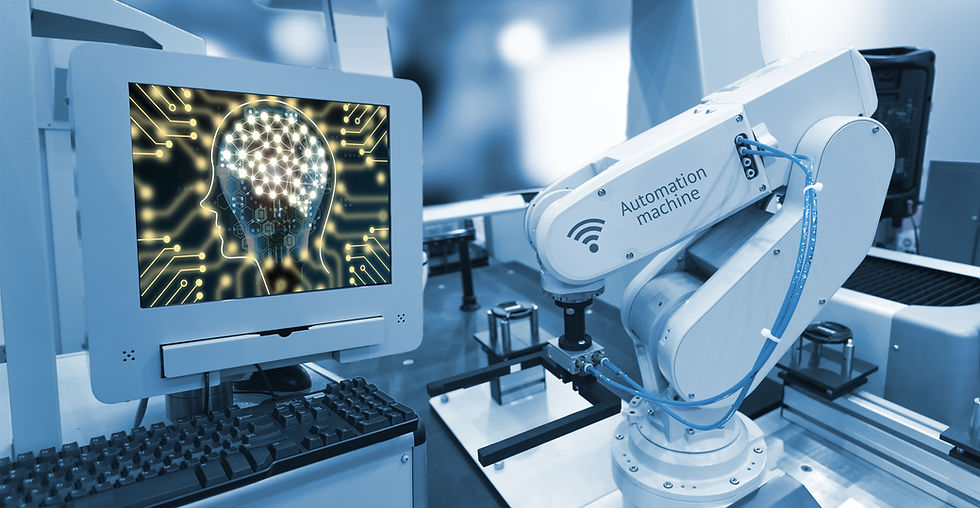
Telepathy : BrightFuture.
- mimic3554
- 3 days ago
- 3 min read
Neurogenesis Overview
Neurogenesis primarily occurs during embryonic development but persists in specific adult brain regions, notably the subventricular zone (SVZ) of the lateral ventricles and the subgranular zone (SGZ) of the hippocampus. In adults, neural stem cells (NSCs) in these regions can differentiate into neurons, astrocytes, or oligodendrocytes when stimulated by factors like physical exercise, environmental enrichment, or certain molecular signals (e.g., brain-derived neurotrophic factor, BDNF). This process is critical for learning, memory, and brain repair but declines with age and in neurodegenerative conditions.
In diseases like Alzheimer’s, neuronal loss in areas like the hippocampus and cortex contributes to cognitive decline. The idea of leveraging neurogenesis to replenish lost neurons is appealing, as it could theoretically restore function. Research shows that promoting neurogenesis in animal models (e.g., mice) can improve memory and cognitive outcomes, but human applications remain challenging due to limited neurogenesis in adults and the complexity of integrating new neurons into existing circuits.
Potential to Stimulate Neurogenesis
Strategies to enhance neurogenesis include:
Lifestyle interventions: Exercise, enriched environments, and cognitive training increase BDNF and other growth factors, boosting neurogenesis in the hippocampus.
Pharmacological approaches: Drugs like antidepressants (e.g., SSRIs) or experimental compounds targeting Wnt or Notch signaling pathways can enhance NSC proliferation.
Gene therapy and molecular interventions: Techniques to upregulate neurotrophic factors or manipulate epigenetic markers are under investigation.
Electrical stimulation: Deep brain stimulation (DBS) or transcranial magnetic stimulation (TMS) may indirectly promote neurogenesis by altering neural activity.
However, challenges remain:
Limited scope:
Adult neurogenesis is confined to specific brain regions, and it’s unclear if it can replenish neurons in heavily affected areas like the cortex in Alzheimer’s.
Integration:
Newස
System: ewly generated neurons need to form functional synapses, which is complex and not fully understood in humans.
Disease-specific barriers:
In Alzheimer’s, amyloid plaques, tau tangles, and inflammation may inhibit neurogenesis or the survival of new neurons.
Connection to Neuralink
Neuralink’s current technology, as tested in the first clinical trial (January 2024), focuses on brain-computer interfaces (BCIs) to restore motor function in paralyzed individuals by decoding neural signals to control external devices. The trial, involving patients like Noland Arbaugh with quadriplegia, does not directly target neurogenesis or neurodegenerative diseases like Alzheimer’s. However, Neuralink’s implant, with its 1,024 electrodes, can record and stimulate neural activity at a high resolution, which could theoretically be adapted to modulate brain regions involved in neurogenesis (e.g., hippocampus) in the future.
While Neuralink’s current trial (PRIME study) does not address dementia or Alzheimer’s, Elon Musk has speculated about future applications for cognitive disorders. For neurogenesis, Neuralink’s technology could potentially:
Stimulate NSCs:
Precise electrical stimulation of the SVZ or SGZ might enhance NSC proliferation or differentiation, similar to DBS effects in other contexts.
Monitor neural activity:
The implant could track neurogenesis-related activity, providing data to optimize stimulation protocols.
Deliver targeted therapies:
Future iterations might combine stimulation with drug or gene delivery to boost neurogenesis.

However, no evidence from the 2024 trial or subsequent reports (up to July 30, 2025) suggests Neuralink has tested this. The trial’s focus remains on motor restoration, and any application to Alzheimer’s or dementia would require new trials targeting neurogenesis or related pathways, which are not yet underway. The retraction of electrodes in Arbaugh’s case (reducing functionality to 10-15%) highlights technical challenges that could complicate such applications.
Effectiveness for Dementia/Alzheimer’s
Currently, no clinical data supports Neuralink’s effectiveness for dementia or Alzheimer’s, as the technology is not designed or tested for these conditions. Neurogenesis-based therapies for Alzheimer’s are still experimental, with most studies in preclinical stages (e.g., animal models). While stimulating neurogenesis could theoretically help replenish neurons lost to disease, significant hurdles include:
• Ensuring new neurons integrate correctly into damaged circuits.
• Counteracting Alzheimer’s-specific pathologies (e.g., amyloid plaques, tau pathology).
• Scaling neurogenesis to clinically meaningful levels in humans.
For Alzheimer’s, other approaches (e.g., anti-amyloid antibodies like lecanemab) are further along but show modest benefits. Neuralink’s potential role in neurogenesis for dementia remains speculative and would need extensive research, likely years away from clinical trials.
Sources and Further Exploration
Scientific literature:
Studies on PubMed (e.g., reviews on adult hippocampal neurogenesis) confirm limited but present neurogenesis in humans, with potential therapeutic roles.
Neuralink updates:
Neuralink’s website (neuralink.com) and X posts from Musk provide trial details but no Alzheimer’s-specific data.
Clinical trials:
Check ClinicalTrials.gov for updates on Neuralink’s PRIME study or emerging neurogenesis trials.




Comments